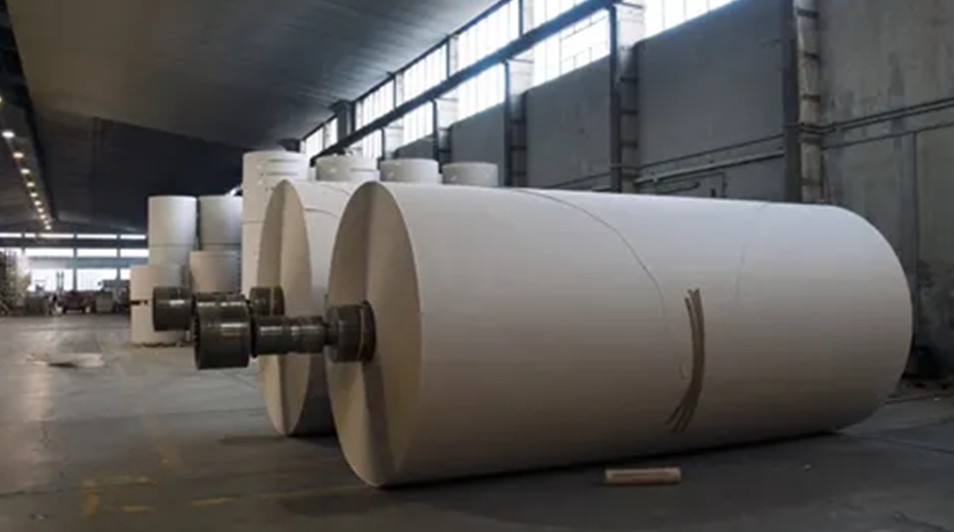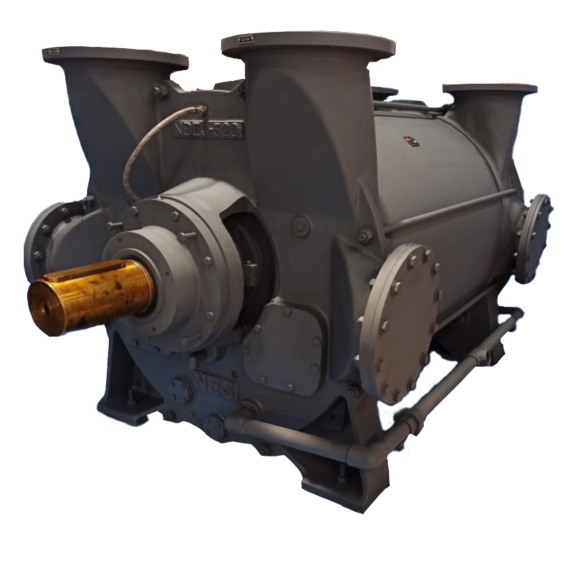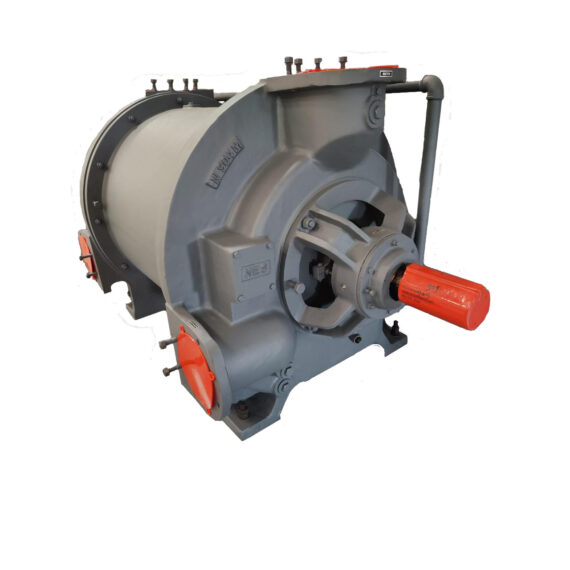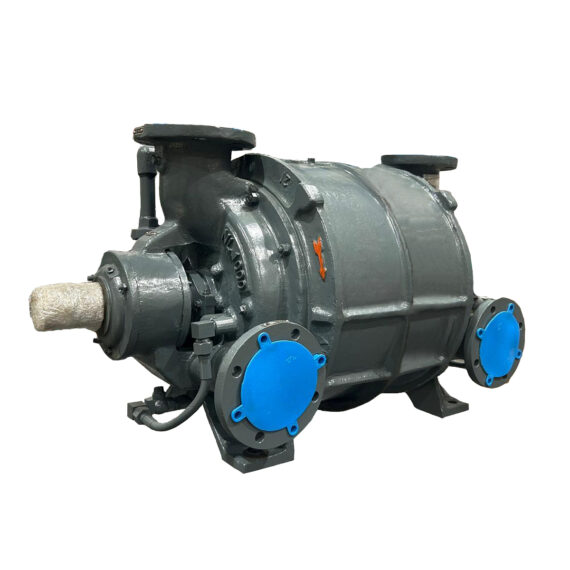
Liquid Ring Vacuum Pumps in Pulp & Paper Processing
In the realm of pulp and paper processing, the utilization of liquid ring vacuum pumps plays a crucial role in streamlining operations and enhancing efficiency. Let’s delve into the papermaking process to understand the pivotal role these pumps play.
The journey begins with the harvesting of trees destined for the pulping factory. In the pursuit of quality paper, the bark is typically discarded as it is not conducive to the papermaking process. To achieve this, logs undergo a debarking process in a rotating drum, ensuring the removal of the bark. Depending on the pulping method employed, logs may be transformed into chips before further processing.
There are historically two primary categories of pulping: mechanical and chemical. The differentiating factor lies in the treatment of lignin, a polymer contributing to cell wall rigidity and the binding of cellulose fibers. For high-quality paper characterized by smoothness and strength, long cellulose fibers are preferred. Chemical pulping stands out by dissolving lignin bonds, resulting in longer and straighter fiber strands, thereby producing stronger paper. In contrast, mechanical pulping, though cost-effective with a higher yield, retains a notable lignin content and is often reserved for newspapers, catalogs, paper towels, and single-use items. Recent advancements include the development of chemi-mechanical processes seeking a balance between cost, environmental impact, yield, and quality.
In the chemical pulping of chips, a digester is employed, containing water, sodium hydroxide, and sodium sulfide. Both sodium hydroxide and sodium sulfide play pivotal roles in reducing the lignin content of the chips. Sodium hydroxide, widely utilized in chemical pulping, exhibits a remarkable capacity to reduce lignin content by 60-90%, dependent on concentration. Notably, sodium hydroxide’s swelling effect on plant material enhances its efficacy in lignin reduction. Simultaneously, the highly soluble sodium sulfide undergoes ionization, reacting with the pulp to break down lignin, ultimately bleaching the pulp and leaving behind pristine cellulose strands. The outcome is a light beige, fine slurry ready for the subsequent papermaking stages.
Amidst these intricate processes, the application of liquid ring vacuum pumps proves indispensable. Their role in maintaining optimal vacuum conditions ensures the smooth progression of pulp and paper processing, contributing to the overall efficiency and success of the operation.
View our Products

To mechanically pulp the chips, the chips are finely ground into split fibers. The goal is to weaken the lignin-to-lignin bonds and separate the fibers at those weakened points. There are many different ways to go about this, such as SGW, RMP, TMP, CTMP, and PGW.
Stone groundwood pulping (SGW) involves pushing debarked wood logs against a rotating stone while cooling the grinding process with water. The resulting liquid falls into a pulp vat. The stone contains microscopic pores and holes that deform the cellulose-lignin bond matrix across the log. The slight heat resulting from the grinding softens the lignin. The individual fibers of the wood, down to the micrometer, are peeled off of the log.
Refiner mechanical pulping (RMP) involves wooden chips becoming smaller chunks through a refiner with two grooved discs. The chunks are refined again using more finely grooved discs, becoming individual fibers or small groups of fibers, known as shives. Hot water is run through the refiners, using the temperature increase to aid in weakening the lignin bonds. Throughout the process, much steam is generated due to the heat generated from operation, such as the friction of the discs’ rotation.
Thermomechanical pulping (TMP) takes the steam generation of the RMP process into consideration and uses it to further break down the matrix within the wood. The wood chips are preheated and refined in a “first stage” refiner. Upon invention of this method, the chips were then sent to a “second stage” refiner at atmospheric pressure. In modern systems, both stages are pressurized. The energy from the heat helps to denature the bonds within the chips, which is aided by the increased pressure. The lignin bonds are much weaker because of these extra considerations, but the cost is higher.
Applications of Liquid Ring Vacuum Pumps
Chemi-thermomechanical pulping (CTMP) revolutionizes the mechanical pulping process by introducing low-concentration alkaline solutions to weaken lignin bonds before undergoing thermomechanical pulping. This innovative approach enhances efficiency and cost-effectiveness, as the resulting cleaner “cuts” and longer fiber strands are ideal for crafting stronger single-use paper items such as paper bags.
Pressure groundwood pulping (PGW) combines SGW and TMP methods, utilizing stone grinding in a pressurized chamber. Despite a potential compromise in quality due to the stone’s rough cutting, this method proves less electrically intensive, resulting in significantly lower operational costs.
Following pulping, the liquor undergoes bleaching, with a shift towards environmentally conscious oxidation techniques replacing traditional chlorination. Oxygen bleaching, conducted at high temperature and pressure, involves a mixture of oxygen and sodium hydroxide, resulting in the dissolution of chromophores within lignin and a more environmentally friendly process.
The pulp is subsequently hydrated to a 1% pulp, 99% water mixture, forming the stock for the papermaking process. Using a Fourdrinier machine, the stock is split into wet and dry sections, creating a paper web through a vacuum-assisted process. The web is then conveyed through a series of rollers and felt belts, where vacuum technology plays a crucial role in drying and shaping the paper. Suction rollers guide the paper through the press section, ensuring uniform thickness.
Further processing involves conveying the paper through a calendar, where polished cylinders create a uniform thickness. The paper then undergoes sizing and coating according to its intended use, with additional sprays and cutters enhancing its quality. Sheets that do not meet quality standards are re-pulped, and the final product can be packaged, coated for waterproofing, or cut into various sizes based on the factory’s clientele.
In this intricate paper production journey, the application of liquid ring vacuum pumps proves indispensable. These pumps contribute to maintaining optimal vacuum conditions, ensuring efficient and reliable paper processing operations, and ultimately enhancing the overall quality of the end product.



